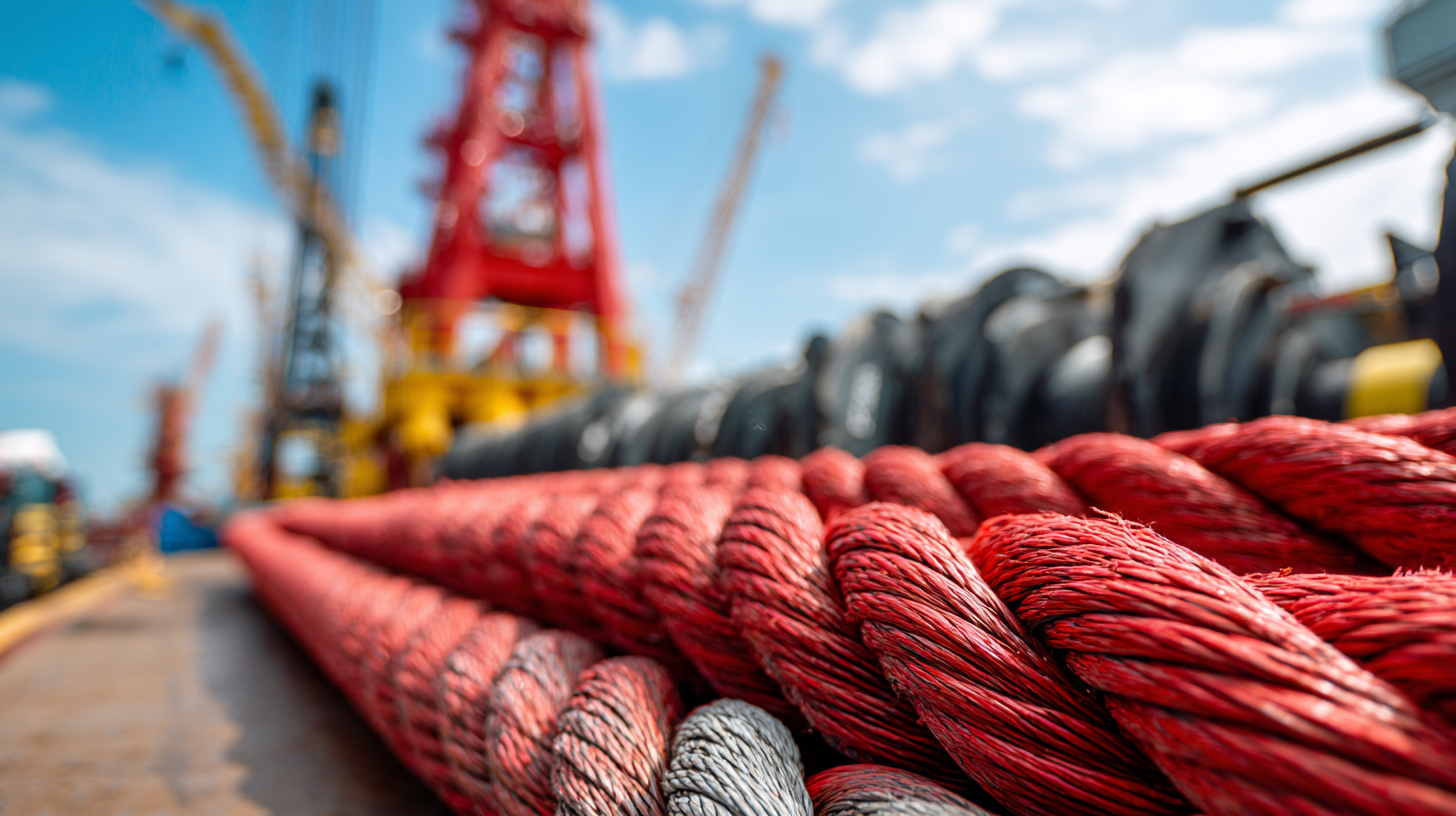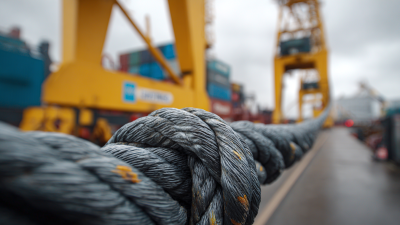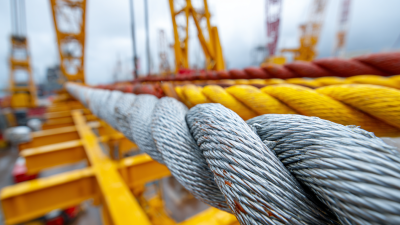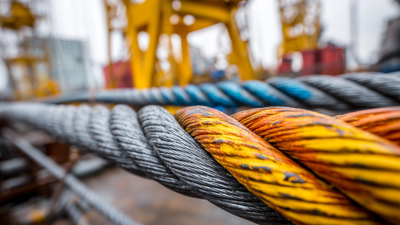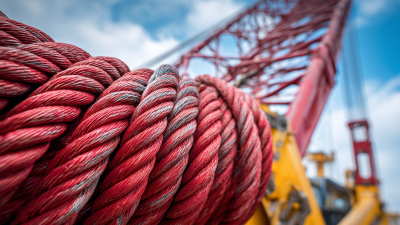Maximize Safety and Efficiency with Advanced Crane Ropes for Heavy Lifting Operations
In the realm of heavy lifting operations, the role of
Crane Ropes cannot be overstated. These essential components not only facilitate the movement of substantial loads but also play a critical role in ensuring the safety and efficiency of lifting tasks.
As industries strive for operational excellence, the advancement of
Crane Ropes has become a focal point, incorporating innovative materials and technologies that enhance performance and durability.
This article delves into the importance of selecting the right
Crane Ropes, highlighting how their design, construction, and maintenance can significantly impact the effectiveness of lifting operations.
By prioritizing the use of advanced Crane Ropes, organizations can reduce the risk of accidents, lower downtime, and ultimately, achieve higher productivity in their operations.
As we explore the nuances of Crane Ropes, we aim to provide insights that will assist industry professionals in making informed decisions that elevate both safety and operational efficiency.
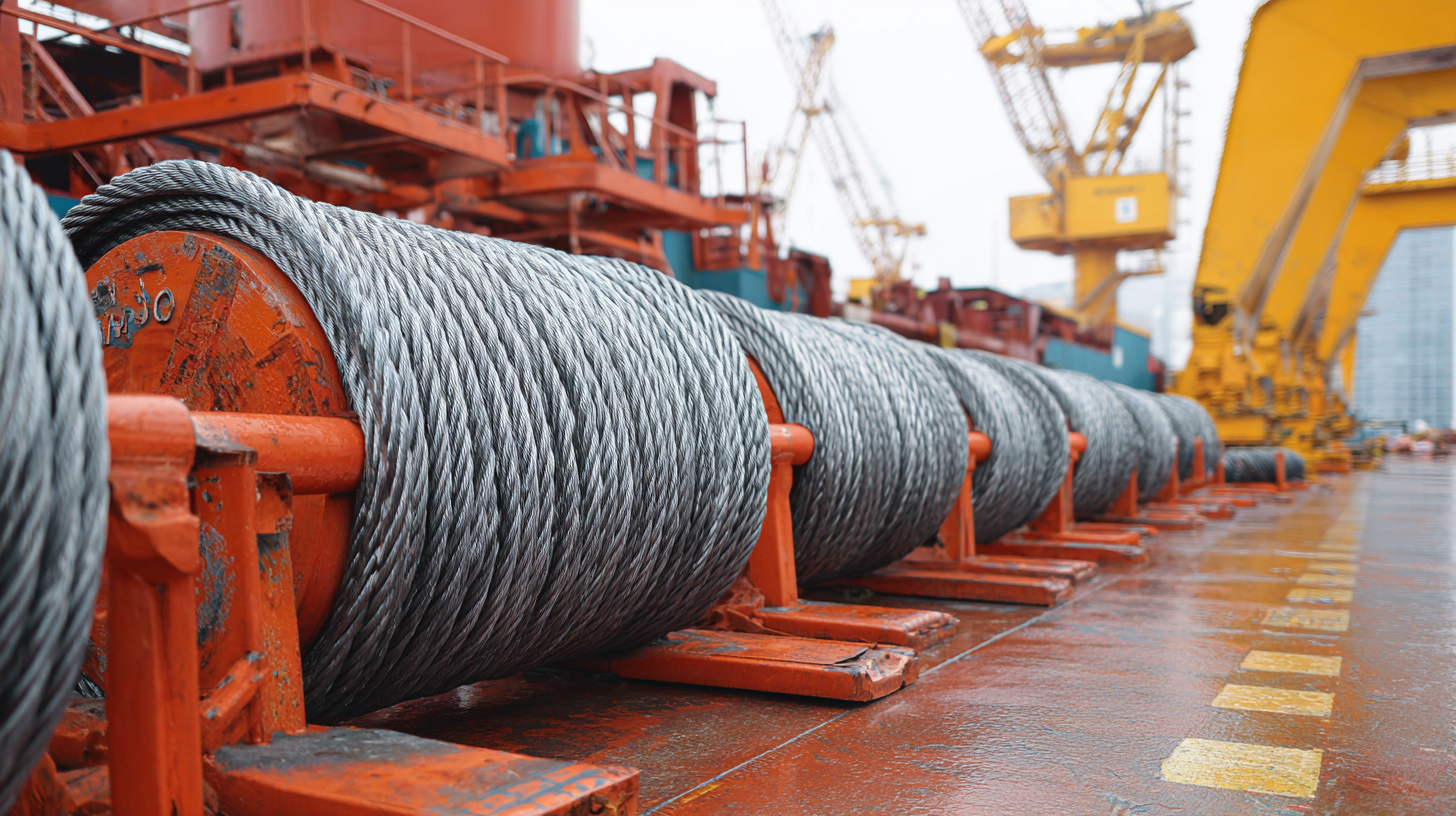
Impact of Advanced Crane Rope Materials on Load Capacity and Safety Factors
The impact of advanced crane rope materials on load capacity and safety factors is pivotal for effective heavy lifting operations. Traditional wire ropes, although widely used, often compromise on weight-to-strength ratios and can suffer from fatigue over time. In contrast, advanced synthetic ropes such as those made from high-modulus polyethylene (HMPE) can withstand larger loads while being significantly lighter. According to a report by the International Crane and Rigging Association, synthetic ropes can offer up to 15 times the strength of steel wire ropes at about one-seventh the weight, drastically improving lifting efficiency and safety.
Tip: When selecting crane ropes, consider the working environment.
Synthetic ropes perform exceptionally well in
corrosive or harsh settings, where steel may be prone to rust and wear. Regular inspection and adherence to manufacturers' recommendations can extend the life of your selected rope, ensuring it maintains optimal performance under load.
Moreover, the safety factors associated with using advanced materials cannot be overstated. Enhanced materials come with improved shock absorption and flexibility, reducing the risk of catastrophic failure during lifting operations. A study by the
Workplace Safety and Health Council highlighted that updated crane rope technologies correlate with a
30% reduction in workplace incidents related to lifting equipment. Implementing these advanced materials not only boosts operational efficiency but also significantly enhances safety protocols in heavy lifting operations.
Tip: Always stay updated on the latest advancements in crane rope technology.
Regular training for operators on the handling and maintenance of new materials can further promote safety and effective use of equipment.
Key Performance Metrics for Heavy Lifting Operations Using High-Tech Crane Ropes
In modern heavy lifting operations, the integration of advanced crane ropes is crucial for maximizing safety and efficiency. High-performance wire ropes provide critical benefits that directly impact key performance metrics, such as load capacity, durability, and operational reliability. Innovations in materials, including fiber-rope options, offer enhanced flexibility and strength, which are essential for handling the demands of complex infrastructure projects and extreme operational environments.
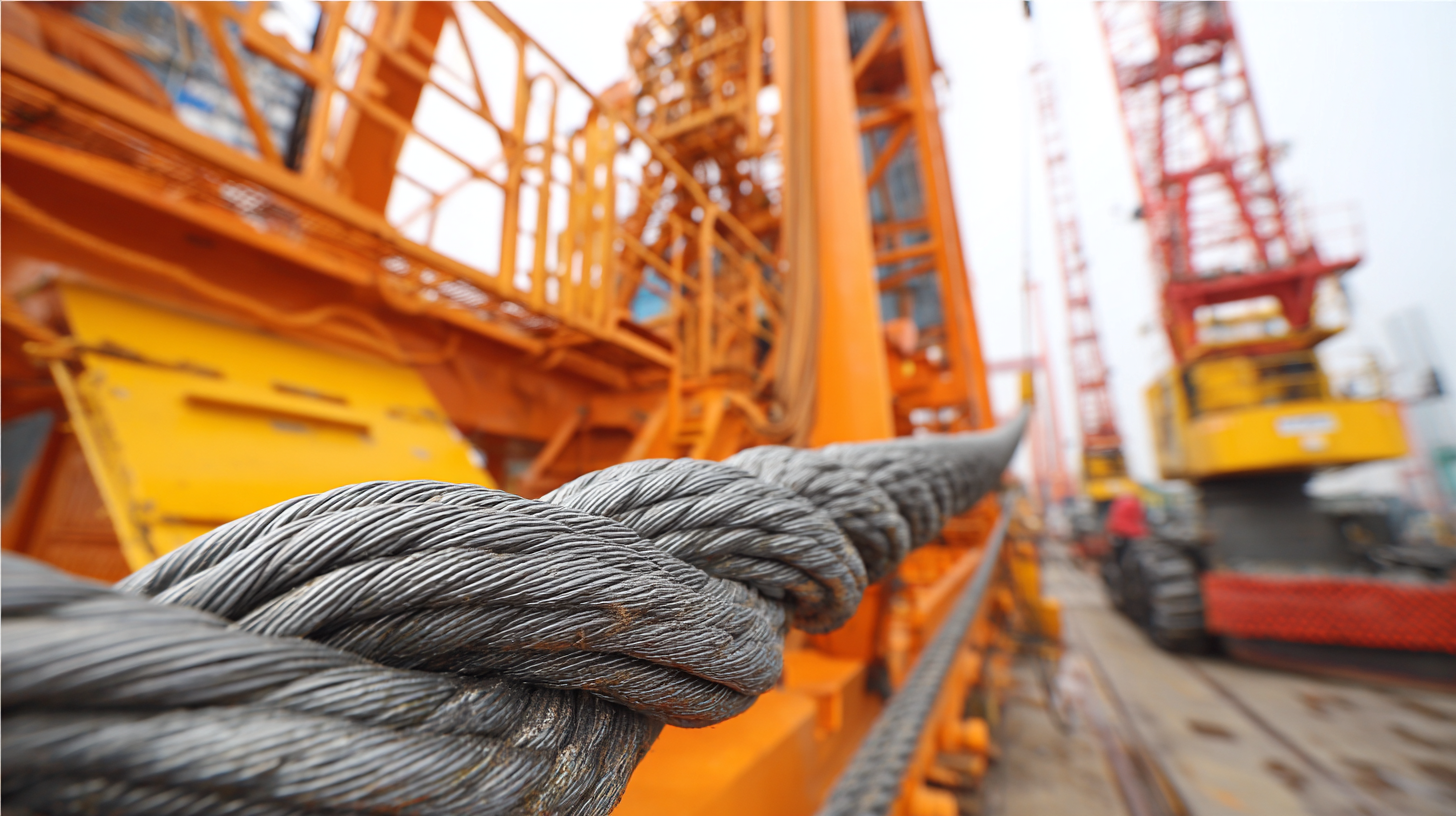
Moreover, the application of intelligent lifting solutions has revolutionized crane operations, heightening productivity and operational safety. Technologies such as remote control crane operation allow operators to monitor and manipulate lifting operations from a safe distance, minimizing the risk of accidents. This evolution in lifting technology not only boosts efficiency during heavy lifting tasks but also ensures compliance with strict safety regulations, ultimately leading to a smoother workflow in sectors like mining and construction.
Comparative Analysis of Traditional vs. Advanced Crane Ropes in Heavy Lifting Efficiency
The efficiency of heavy lifting operations is significantly influenced by the type of crane ropes used. Traditional crane ropes, while reliable, often fall short in performance compared to advanced options. Advanced crane ropes are designed using innovative materials and technologies, resulting in lighter weight, higher tensile strength, and improved durability. These features not only enhance lifting performance but also extend the lifespan of the ropes, leading to cost savings over time. Industries relying on heavy lifting must consider these advancements to stay competitive.
Tips for Selecting the Right Crane Rope:
- Assess the load requirements: Ensure the rope chosen can handle the maximum anticipated load.
- Consider environmental factors: Choose materials that withstand specific conditions like corrosion, abrasion, or extreme temperatures.
- Regular inspections: Implement a routine check to identify signs of wear or damage, optimizing safety.
Beyond the physical attributes, advanced crane ropes often facilitate smoother operation and reduced maintenance needs. Unlike traditional ropes, they can minimize energy loss during lifting, thereby improving overall efficiency. This enhanced performance not only accelerates project timelines but also reinforces workplace safety, making a strong case for transitioning to advanced crane rope technology in heavy lifting operations.
Safety Regulations and Standards for Crane Ropes in Industrial Applications
When it comes to heavy lifting operations, adhering to safety regulations and standards is paramount. The Occupational Safety and Health Administration (OSHA) provides guidelines that specify the testing and use of crane ropes, emphasizing the necessity for regular inspections. According to a recent industry report, over 70% of crane incidents are linked to equipment failure, with improper rope maintenance being a significant contributor. This makes it crucial for operators to comply with standards such as ASTM A1023, which details specifications for wire rope used in overhead lifting.
Tips: Regularly inspect crane ropes for signs of wear or damage, including broken wires and corrosion. Replace ropes that show significant wear, following the manufacturer’s guidelines to ensure compliance with safety standards.
Moreover, the use of advanced materials in crane rope construction, such as synthetic fibers and high-tensile steel, has been shown to enhance both strength and safety. Research indicates that synthetic ropes can reduce weight by up to 50% while increasing tensile strength. Operators should familiarize themselves with these innovations to improve operational efficiency and safety.
Tips: Train operators on the proper handling and maintenance of advanced crane ropes to maximize their lifespan and effectiveness. Regular training sessions can help mitigate risks associated with heavy lifting operations.
Innovations in Crane Rope Technology Enhancing Operational Speed and Reducing Downtime
In the realm of heavy lifting operations, innovations in crane rope technology are significantly enhancing operational speed and reducing downtime. Recent studies indicate that advanced synthetic ropes can increase lifting efficiency by up to 30% compared to traditional steel cables. This improvement is largely attributed to their lighter weight and higher tensile strength, which allow for faster handling and less wear on rigging equipment. For instance, a report from the International Crane and Transport (ICT) revealed that companies adopting these modern materials experienced a drastic reduction in load times, enabling them to complete projects more quickly and efficiently.
Furthermore, the integration of smart technologies in crane rope design, such as built-in sensors for real-time monitoring, is paving the way for safer operations. These sensors can detect wear and tear, alerting operators to potential failures before they occur. According to industry data, the implementation of such preventative measures can decrease equipment downtime by as much as 40%. This not only improves safety by mitigating the risk of accidents but also extends the lifespan of the cranes and their components. As industries demand higher productivity levels, the transition to advanced crane rope technology is becoming essential for ensuring both safety and efficiency in heavy lifting operations.

Home
About Us
Products
Stainless Steel Anchor Chain
Manganese Steel Lifting Chain Grade 80
Manganese Steel Lifting Chain
Hastelloy Round Bars
Hastelloy Sheet
Hastelloy steel pipe
Stainless steel wire rope
Stainless steel round
Stainless steel hexagonal rod
Stainless steel strip
Plastic coating wire rope
Stainless steel plate
Stainless steel angle
Stainless steel pipe
Stainless steel wire
Stainless steel flange
Stainless steel channel
Stainless steel flat steel
Industries
News
Service
Blog
Contact Us

